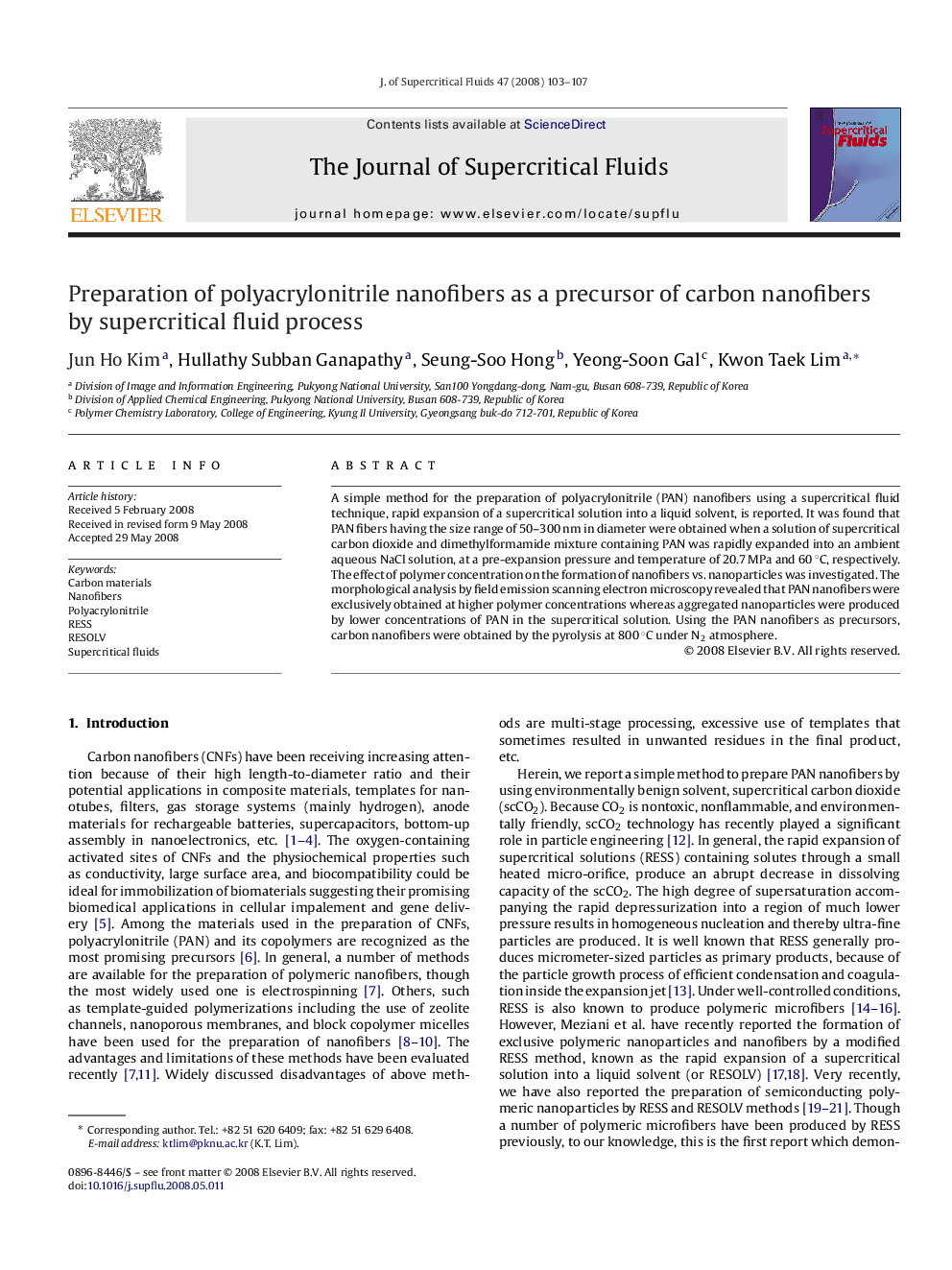| Article ID | Journal | Published Year | Pages | File Type |
|---|---|---|---|---|
| 231864 | The Journal of Supercritical Fluids | 2008 | 5 Pages |
A simple method for the preparation of polyacrylonitrile (PAN) nanofibers using a supercritical fluid technique, rapid expansion of a supercritical solution into a liquid solvent, is reported. It was found that PAN fibers having the size range of 50–300 nm in diameter were obtained when a solution of supercritical carbon dioxide and dimethylformamide mixture containing PAN was rapidly expanded into an ambient aqueous NaCl solution, at a pre-expansion pressure and temperature of 20.7 MPa and 60 °C, respectively. The effect of polymer concentration on the formation of nanofibers vs. nanoparticles was investigated. The morphological analysis by field emission scanning electron microscopy revealed that PAN nanofibers were exclusively obtained at higher polymer concentrations whereas aggregated nanoparticles were produced by lower concentrations of PAN in the supercritical solution. Using the PAN nanofibers as precursors, carbon nanofibers were obtained by the pyrolysis at 800 °C under N2 atmosphere.
Graphical abstractThis work demonstrates the use of supercritical fluid RESOLV technique to produce the polyacrylonitrile (PAN) nanofibers as precursor for carbon nanofibers. The PAN nanofibers having size range of 50–300 nm in diameter were produced by the rapid expansion of supercritical CO2–DMF solutions containing 4–6 mg of PAN into ambient aqueous NaCl solutions at 20.7 MPa and 60 °C. Using the PAN nanofibers produced by RESOLV, carbon nanofibers were obtained by the carbonization at temperatures up to 800 °C under N2 atmosphere. Figure optionsDownload full-size imageDownload as PowerPoint slide
